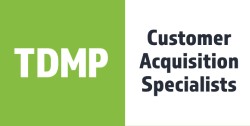From Google’s latest AI Mode expansion to new Ads policies and tools, here are the key search industry developments marketers, publishers, and advertisers need to know in July so far.
Updates are colour coded by importance:
🔴 Major developments likely to impact strategy
🟡 Worth watching or understanding
🟢 Informative - but lower impact for most
Google Search
AI Mode gets full release in India 🔴
Just a couple of weeks after a limited release in Search Labs, Google has launched AI Mode in full in India. This follows a full US release on June 12.
For site owners…
Not only does this mean that a UK launch could happen at any time - we can also assume that the testing period will be similarly short.
Expect a full UK rollout in the near future. Now is the time for all businesses to take proactive steps to adapt their content strategies and optimise existing content for enhanced visibility in AI Mode outputs.
At TDMP, we have processes in motion to fully prepare all our clients for the arrival of AI Mode in the UK. Contact us today to discuss how we can do the same for your business.
AI Mode cites different sources for the same queries 🟡
One of the latest AI Mode revelations from the States is that it doesn’t cite the same sources when a query is refreshed.
Ask it a question once, then ask the same question again after a refresh, and the sources may well differ. The second query, though identical, may also result in more or fewer citations than the first.
For publishers…
This suggests that AI Mode’s retrieval model is broader and more dynamic than classic SERPs.
As a result, webpages that don’t rank on Google’s first page have a good chance of exposure in AI Mode outputs - assuming content is well optimised for AI search and accurately addresses search intent.
But this doesn’t mean there’s no point in ranking well on Google’s classic SERPs. Because these systems rely heavily on Google’s existing index, quality signals, and ranking frameworks, content that is already considered authoritative and relevant by the traditional ranking algorithm has a better shot at being pulled in as a source.
Furthermore, with the overlap between AI Overview citations and the classic 10 blue links getting larger, without a strong SEO strategy and a good rank, you may well end up invisible to users who choose to continue using Google’s main search page.
A balanced approach that considers the specifics of each AI feature type and integrates SEO with GEO (generative engine optimisation) will garner the best results across all of Google’s search avenues. This is something TDMP can help with.
We’ve anticipated Google’s shift toward an AI-driven search experience for years and have adapted our strategies to stay ahead. Our comprehensive SEO service is fully GEO-integrated, helping clients navigate the challenges of AI-powered search while capitalising on the new opportunities it creates. Learn more.
AI Overviews now powering a growing share of People Also Ask results 🟡
Since November, Google has been incorporating AI Overviews into some People Also Ask (PAA) boxes — previously the domain of featured snippets.
New data from AlsoAsked’s Mark Williams-Cook shows that 12.6% of PAA answers are now AI-generated summaries, while 87.4% still pull directly from individual, cited websites.
Unlike traditional snippets, AI Overview-powered responses cite multiple sources and present synthesised answers.
For marketers and publishers:
Visibility via PAA may become more difficult to secure as Google replaces single-source snippets with multi-source AI summaries.
While citations are still present, they’re more diffuse — making it harder to own a clear position.
Focus on building authoritative content that can earn inclusion in these overviews, and monitor shifts in CTR and visibility for key informational queries.
Google SEO
Cloudflare confident about Google cooperation on AI block decision 🔴
In our June-end roundup, we covered Cloudflare’s major decision to block AI crawlers by default — laying the groundwork for creators to negotiate rates for access to their content.
This was welcomed by the creator community, but it did give rise to one concern: there is currently no way to block AI Overviews from using your content for training or outputs without also blocking Google as a whole.
To stop Google’s Gemini crawlers from training on your content, you can use a specific robots.txt directive to block the Google-Extended user agent. However, this only prevents your content from being used to train Gemini models. It does not stop Google from including your content in AI Overviews or other search-related outputs.
As it works now, AI Overviews doesn’t have a separate crawler; it relies on the same index built by Googlebot. So even if you block Google-Extended to opt out of training, your content will still be processed and displayed in AIO and other AI-powered features.
The only sure-fire way to prevent any AI usage of your content—including generating summaries in AI Overviews—is to remove your site from Google’s index entirely.
As of now, the infrastructure simply doesn’t exist for creators to split access privileges between Gemini outputs and standard search indexing.
In response to this concern, Cloudflare stated they were confident that Google would provide a pathway for splitting these access privileges.
For creators and site owners…
Google may be seeing more competition than ever before, but they still have a chokehold on the search market, and if there’s one place you really need your website to be visible, it’s on Google.
This is why Google is and will remain a priority for TDMP.
That said, it’s categorically unfair that AI crawlers are scraping your content thousands of times for free while sending through fewer and fewer eyeballs in return.
According to Cloudflare CEO Matthew Prince, when Google’s SERP was the classic 10 blue links, on average, the click-per-scrape ratio was one click for every two pages scraped by Google — a pretty good trade-off.
Since AI Overviews launched, this weighting has shifted dramatically, with Google sending you 1 visitor for every 18 of your pages scraped. And this movement is even more pronounced across dedicated AI search tools.
Currently, for OpenAI’s tools, it’s more like 1,500 scrapes per single click, and an astounding 60,000 scrapes per visitor from Anthropic.
And considering the number of people using the internet globally has increased significantly since the days of Google’s classic SERPs, the severity of this downturn in traffic is even more aggressive than these figures suggest.
This shift isn’t necessarily down to these platforms scraping content at higher rates, but because they’re building trust among users, reducing the perceived need to click through to sources and read original content.
Some say this is unsustainable, as it will remove the incentive to create content, leaving AI platforms ever-shrinking resources for training and forming outputs. We say this is only true in part.
For websites that monetise through display ads, yes, it is unsustainable. For content creators that do what they do for passion or renown, again, yes, this is unsustainable, as all of the above rely on traffic volume.
For businesses providing products or services, however, this trend is not nearly as worrisome. As discussed previously, although AI search reduces clicks, the clicks you do get tend to be of a much higher quality.
But the current click-per-scrape ratio still means that you’re doing a lot of work for nothing, while entities like Google monetise it for themselves at zero cost.
So, if Cloudflare can get Google to agree to their terms, it would be huge for the entire digital community!
The question is… will Google play ball?
Well, as reported by Bloomberg in May, documents from Google’s monopoly legal battle showed that the company was firmly against granting publishers more control over how their content is used in AI search features.
In fact, the document showed that Google declared giving as small a concession as allowing publishers to prevent AI Overviews from referencing their content in real-time a ‘hard red line’.
Yet Prince remains confident Google will come to the table.
One reason is because original content is essential for the continued viability of AI Overviews and AI Mode. If content creation goes into decline, AI platforms stagnate, tanking reputation and use rates.
But Cloudflare has another card up its sleeve — see the below social posts from Prince:
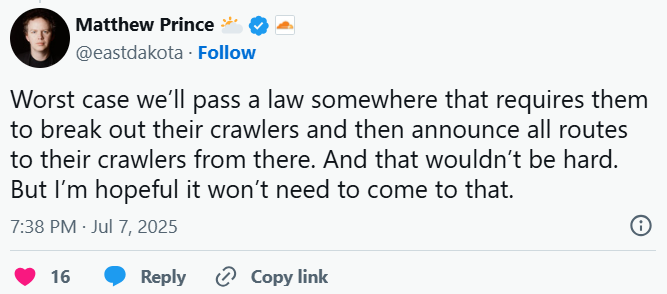
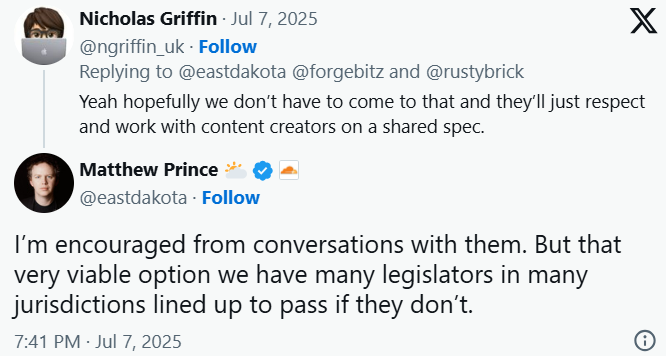
Our advice is to monitor developments closely. A deal between Cloudflare and Google could lead to significant financial benefits for your business, while a no-deal scenario will mean, for the time being, you’re probably better off allowing AI Overviews access to your content.
AI-assisted content is fine - but there’s a limit 🟡
A recent Ahrefs study aimed at determining the presence of AI content in Google’s top positions revealed that 86.5% of pages from the top 20 ranking URLs contained “some amount of AI-generated content.”
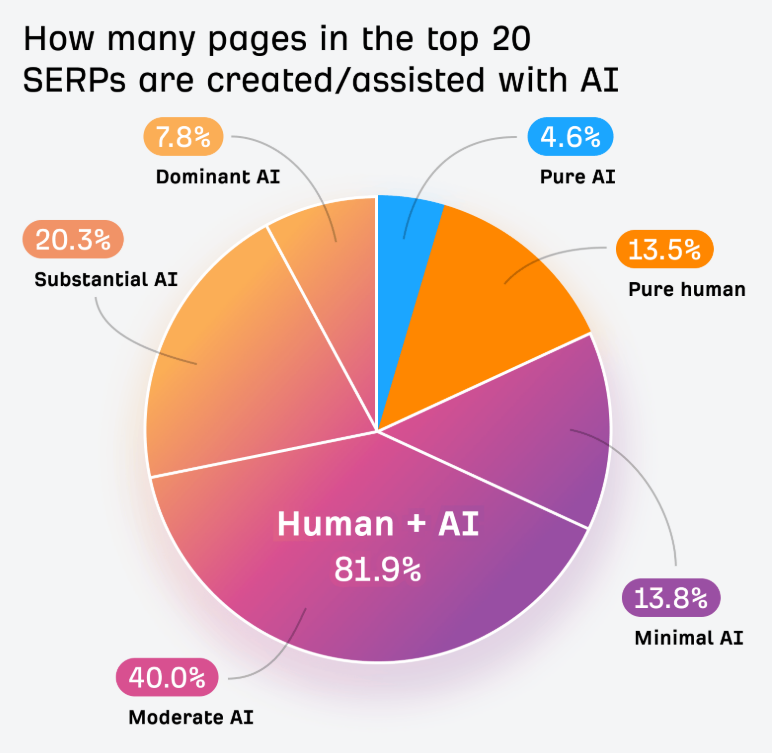
Source: Ahrefs
For creators and publishers…
This is hard evidence that Google is fine with AI-generated content as long as the end-product is high quality and offers genuine value to searchers.
However, as illustrated by the pie chart above, it’s also clear that overdoing it significantly reduces your chances of ranking in a top 20 position.
There’s also the matter of Google’s scaled content abuse spam policy to contend with when pushing too hard with AI to scale your output.
So, while this is reassuring data, human oversight remains essential.
Keep your SEO strategy up to date with our guide: SEO in 2025: What’s changing - and what no longer matters
AI Overviews has increased zero-click searches by more than 10% 🟡
A recent report from Similarweb indicates that the share of US zero-click searches—instances where users don’t click any results on the search results page—has risen from 56% to 69% in the first year since AI Overviews launched.
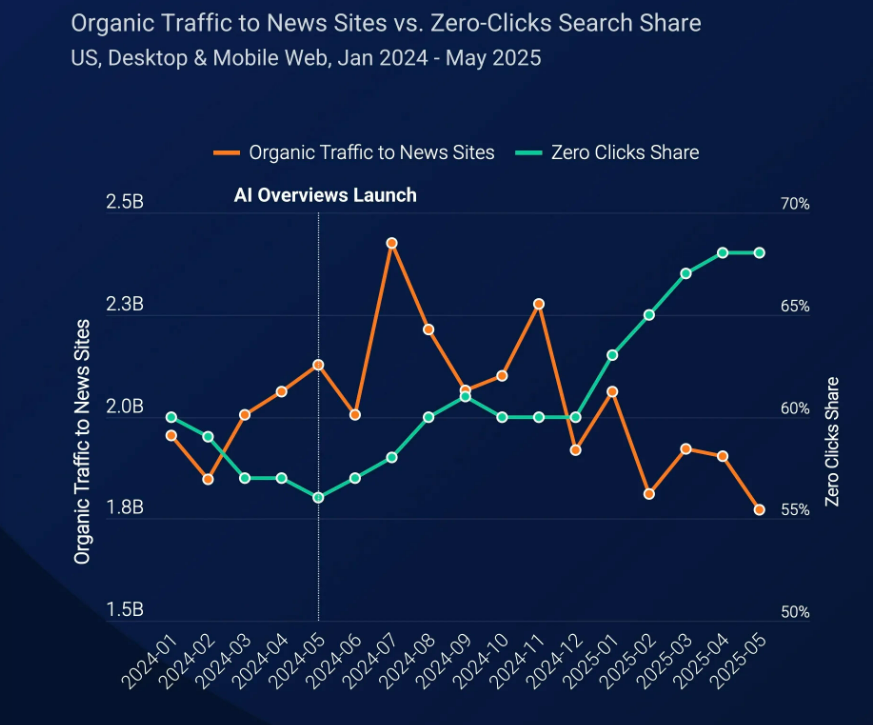
Source: Similarweb
This is just the most recent of several studies showing a decline in organic traffic as Google continues to lean into generative features.
For marketers…
As we mentioned earlier (and previously on the blog), AI Overviews and AI Mode are undeniably reducing clicks across the board. However, the clicks you do still earn through citations in AI-generated answers tend to be higher intent and more qualified — users who are more engaged and ready to take action.
While organic traffic is shrinking, it’s more important than ever to focus on creating authoritative, trustworthy content that earns those meaningful interactions.
GBP verification requests on the rise again 🟢
Google is once again triggering an unusually high number of Business Profile reverification requests — something we last saw in late 2024.
This likely ties into Google’s ongoing push to make GBP listings more focused on local, customer-facing businesses.
For local businesses…
If you manage a Google Business Profile, keep an eye out for reverification prompts — especially video requests, which can catch teams off guard.
Check out our GBP Video Verification Guide to get it right first time and get your profile back up and running.
Paid media
Google defends hidden search terms in Ads Console as privacy-driven 🔴
Ginny Marvin, Google’s Ads Liaison, has clarified that the significant increase in hidden search terms within Google Ads reports is driven purely by privacy considerations.
Her comments came in response to an analysis by Collin Slattery, who reviewed $20 million in ad spend and found that for every $1 spent, $0.85 was effectively “lost” to unreported search terms — an inefficiency he called staggering.
Marvin explained that a search term is only reported if it meets a minimum volume threshold across all Google searches to protect user privacy. She acknowledged the frustration but emphasised that Smart Bidding does not consider whether a query will be reported when deciding how to bid.
For advertisers…
To mitigate the impact, it’s critical to focus on robust negative keyword strategies, leverage Search Terms Insights, and track performance holistically rather than relying solely on query-level visibility.
If you need support optimising your paid media strategy to minimise the impact of hidden search terms and maximise your return on ad spend, TDMP is a Google Premier Partner PPC agency with a proven track record of delivering outstanding results for clients across a broad range of sectors. Learn more.
Microsoft Advertising to retire standalone Target CPA and Target ROAS bidding strategies 🟡
Starting August 4, 2025, Microsoft Advertising will remove Target CPA (cost per acquisition) and Target ROAS (return on ad spend) as separate bidding strategies. Instead, these will become optional targets within Maximise Conversions and Maximise Conversion Value campaigns.
For advertisers…
Existing campaigns using Target CPA or Target ROAS will continue running unchanged, and portfolio bid strategies won’t be affected. For new campaigns, advertisers will need to adopt Maximise Conversions or Maximise Conversion Value and set target CPA or ROAS goals as parameters rather than standalone strategies.
Plan ahead to update your workflows and campaign templates — any new campaigns after August 4 will require Maximise bidding strategies with optional targets.
Review your automation settings and ensure your teams and API integrations are prepared to transition without disruption.
Google Keyword Planner adds forecast breakdown by region and device 🟡
Google has enhanced its Keyword Planner tool with new forecast views that allow advertisers to see keyword performance predictions broken down by city, region, and device/platform.
Announced by Amiya Prakash on LinkedIn, this update offers more granular insights, including filtering by state, DMA, municipality, and more. The tool also now groups related keyword ideas within the Keyword Ideas section, helping marketers analyse keywords individually or in clusters.
This improvement is especially valuable for those managing multi-location or geo-targeted campaigns, enabling more precise budgeting and targeting decisions.
For marketers and advertisers…
Leverage these new granular forecasts to tailor campaigns more precisely by geography and device, optimising budget allocation and improving targeting accuracy.
If you run local or multi-region campaigns, this update can significantly enhance your keyword strategy and campaign performance.
Google Ads Editor Version 2.10 Released with Major Feature Updates 🟢
Google has launched version 2.10 of Google Ads Editor, introducing over 20 new capabilities — one of the most extensive updates the tool has seen.
Highlights include campaign-level negative keywords for Performance Max, deeper device and platform targeting (including desktop OS), new support for Target CPC bidding in Demand Gen campaigns, and AI-powered features for Search campaigns like Final URL expansion.
For advertisers…
If you rely on Google Ads Editor for bulk management, this update offers significant new tools for refining targeting, streamlining workflows, and integrating AI capabilities into your campaigns. It’s worth updating promptly and reviewing the release notes to take advantage of the expanded feature set.
Stay current with TDMP
Search is changing rapidly. With AI Mode set to hit UK shores any day now, those with informed, proactive strategies are well positioned for success. Now’s the time to prepare - let’s talk.
